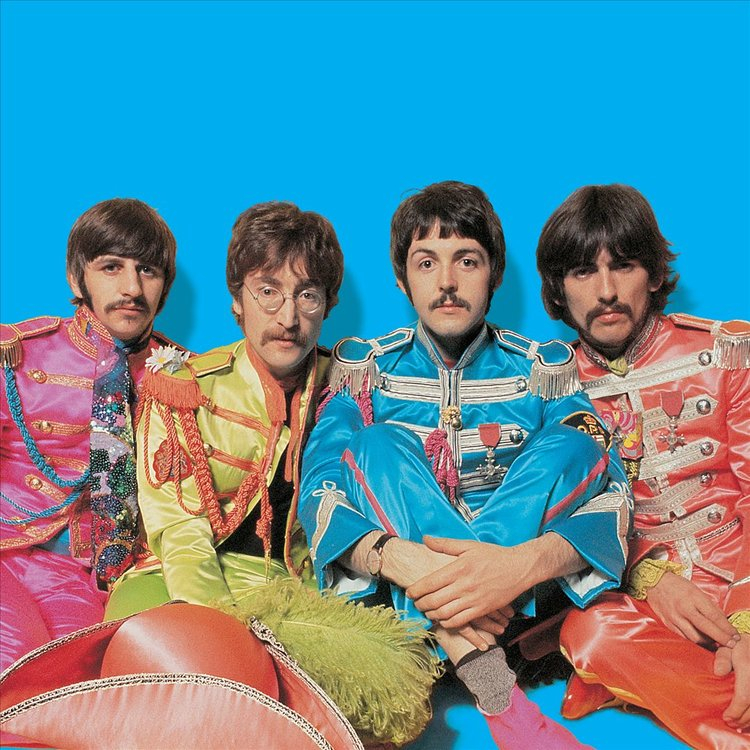For over six decades, the Billboard Hot 100 has remained a central fixture in the music world. Whether you’re a casual listener, a devoted fan, or an artist aiming for success, the Hot 100 serves as a barometer of the most popular songs in the United States. As an evolving and dynamic chart, the Hot 100 reflects shifting musical tastes, the influence of technology, and the global rise of streaming platforms.
In 2024, the chart continues to provide a snapshot of the ever-changing music industry, influenced by emerging genres, viral trends on social media, and the growing importance of digital streaming platforms. As we explore the history, methodology, and trends of the Billboard Hot 100, we’ll see how it has shaped the careers of countless artists while adapting to the modern era.
The History of Billboard Hot 100
The Billboard Hot 100 made its debut on August 4, 1958. Prior to that, Billboard published multiple separate charts, including a Best Sellers in Stores chart, a Most Played by Jockeys chart, and a Juke Box chart. The decision to create the Hot 100 came from a desire to consolidate these separate metrics into a single ranking system. The first No. 1 hit on the newly established chart was “Poor Little Fool” by Ricky Nelson.
For years, the Hot 100 relied on a combination of sales data and radio airplay to determine a song’s ranking. Initially, sales figures were manually reported by record stores, while airplay data came from radio stations across the country. This method provided a relatively accurate reflection of popular music, but it wasn’t without its limitations—particularly due to the manual nature of data collection.
Evolution of Chart Methodology

The methodology used to compile the Hot 100 has undergone several transformations as the music industry evolved. Let’s break down these changes:
- 1958 to 1991: Physical Sales and Radio Airplay: In its early years, the Hot 100 relied heavily on reports from physical record stores and radio stations. Songs would climb the chart based on how many units they sold in stores and how frequently they were played on the radio. However, this system was imperfect, as it often relied on estimates rather than precise data.
- 1991 to 2005: Nielsen SoundScan Era: In 1991, Billboard began using Nielsen SoundScan to track sales data. This system used barcode scanners at retail locations to provide more accurate and comprehensive information about which songs were selling the most. The introduction of SoundScan revolutionized the chart, bringing transparency and accuracy.
- 2005 to 2012: The Digital Revolution: With the advent of the digital age, Billboard began incorporating digital downloads into the chart’s calculation. Platforms like iTunes allowed consumers to purchase individual tracks, and these sales became a major factor in determining a song’s chart position. As CDs began to decline in popularity, digital sales became more and more dominant.
- 2012 to Present: The Streaming Era: In 2012, streaming data was introduced as part of the Billboard Hot 100 formula. As platforms like Spotify, Apple Music, and YouTube gained prominence, the chart adapted by including these numbers, which now make up a large portion of a song’s overall ranking. Streaming has continued to grow in importance, with paid subscription streams weighted more heavily than ad-supported streams.
Current Methodology (2024)
In 2024, the Billboard Hot 100 ranks songs based on three primary metrics:
- Streaming (audio and video),
- Radio airplay, and
- Digital sales.
These components are compiled by Luminate (formerly known as Nielsen Music/MRC Data). Here’s a breakdown of how each component is factored in:
- Streaming: Songs accumulate points based on the number of audio and video streams they receive. Paid subscriptions (e.g., Spotify Premium) carry more weight than ad-supported streams (e.g., YouTube or Spotify’s free tier).
- Radio Airplay: Billboard tracks airplay across several radio formats. Songs that receive heavy rotation on Top 40, adult contemporary, and urban stations tend to perform well on the chart.
- Digital Sales: Though digital sales have declined due to the rise of streaming, they are still included in the Hot 100’s formula. Individual track purchases from platforms like iTunes and Amazon contribute to a song’s ranking.
Major Milestones in Billboard Hot 100 History

The Billboard Hot 100 has witnessed numerous iconic moments and milestones over the years. Here are some of the most noteworthy:
- The Beatles: The Beatles hold the record for the most No. 1 hits on the Hot 100, with 20 songs reaching the top spot. Their dominance in the 1960s was unmatched, and they remain one of the most successful acts in chart history.
- Mariah Carey’s “All I Want for Christmas Is You”: Released in 1994, this holiday classic has re-entered the chart every December since 2019, breaking records for the longest-running Christmas No. 1. As of 2024, the song holds the record for the most weeks at No. 1 for a holiday song.
- Lil Nas X’s “Old Town Road” (featuring Billy Ray Cyrus): In 2019, “Old Town Road” set the record for the longest run at No. 1 on the Hot 100, spending 19 consecutive weeks at the top. The song’s success was largely driven by its viral popularity on platforms like TikTok and its genre-blending appeal.
- Drake’s Hot 100 Dominance: As of 2024, Drake holds the record for the most top 10 entries (currently 68), surpassing previous record holders like Madonna and The Beatles. Drake’s ability to consistently release chart-topping music across multiple genres has solidified his status as a Hot 100 titan.
Hot 100 in 2024: Latest Trends

The Billboard Hot 100 continues to evolve with the music industry. In 2024, several trends are defining the chart landscape:
- TikTok’s Influence on Chart Rankings: Social media, particularly TikTok, has become a dominant force in influencing what songs make it onto the Hot 100. Viral trends, challenges, and dance routines have turned previously unknown songs into massive hits. Tracks like Oliver Anthony’s “Rich Men North of Richmond” gained widespread popularity in 2023, primarily because of viral TikTok challenges and remixes. In 2024, this trend continues, with several songs breaking into the Hot 100 solely because of their popularity on TikTok.
- Genre-Bending Hits: The genre lines are more blurred than ever, with artists frequently combining elements of pop, hip-hop, country, and EDM into their music. For instance, in 2024, Shaboozey’s “A Bar Song (Tipsy)” is a country-rap hybrid that has spent multiple weeks at No. 1. Similarly, the rising popularity of Latin trap, Afrobeat, and K-pop has introduced diverse sounds to the American audience, further enriching the Hot 100’s diversity.
- Resurgence of Country Music: While pop and hip-hop have long been dominant forces on the chart, country music has enjoyed a resurgence in recent years. Artists like Morgan Wallen, Luke Combs, and Zach Bryan are leading the charge, regularly placing high on the Hot 100 and gaining crossover success on mainstream radio. Wallen’s 2023 hit “Last Night” became a multi-week No. 1, reflecting the enduring popularity of country music in the streaming era.
- Sabrina Carpenter’s Record-Breaking Streak: In 2024, Sabrina Carpenter joined an elite group of artists by having three songs simultaneously in the top five of the Billboard Hot 100, a feat previously accomplished only by The Beatles in 1964. Carpenter’s chart success is a testament to her wide fanbase and the impact of streaming platforms, where her music has resonated globally.
- The Globalization of the Hot 100: International artists are increasingly breaking into the Hot 100. Latin and K-pop artists have found significant success in the U.S., with acts like Bad Bunny, BTS, and Rosalía consistently appearing on the chart. In 2024, global collaboration is also on the rise, with American artists teaming up with international stars to reach a broader audience. Bad Bunny’s collaboration with Travis Scott and The Weeknd in 2023 on “K-POP” reflects this trend.
- Taylor Swift’s Ongoing Dominance: As one of the most consistent chart-toppers, Taylor Swift has continued to make her mark on the Hot 100. Her Eras Tour in 2023–24 not only boosted her previous albums but also led to the resurgence of songs like “Cruel Summer,” which became a top 10 hit years after its original release. Swift’s dominance on the chart underscores the importance of sustained fan engagement, particularly through live performances and social media.
- AI-Generated Music and Its Impact: With the growing role of AI in music production, some AI-generated songs are starting to make waves on the Hot 100. These tracks blend human artistry with algorithmic precision, creating a new sound that challenges traditional notions of music composition. In 2024, several AI-assisted tracks have climbed the Hot 100, showcasing the potential for technology to reshape the industry.
Conclusion
The Billboard Hot 100 continues to be a reflection of the current state of the music industry. From its humble beginnings as a chart based on radio airplay and sales to its current reliance on streaming data and digital sales, the Hot 100 has adapted to the evolving landscape of music consumption. In 2024, trends like the rise of TikTok, genre-blending hits, the resurgence of country music, and the globalization of the chart highlight the diversity of music and the different paths artists can take to chart success.
With new technologies like AI impacting the music industry and global platforms elevating international acts, the future of the Billboard Hot 100 is sure to be just as dynamic as its past. Whatever trends may come next, one thing is certain: the Billboard Hot 100 will continue to be a crucial measure of success for artists and a reliable reflection of the songs that define our cultural moment.





